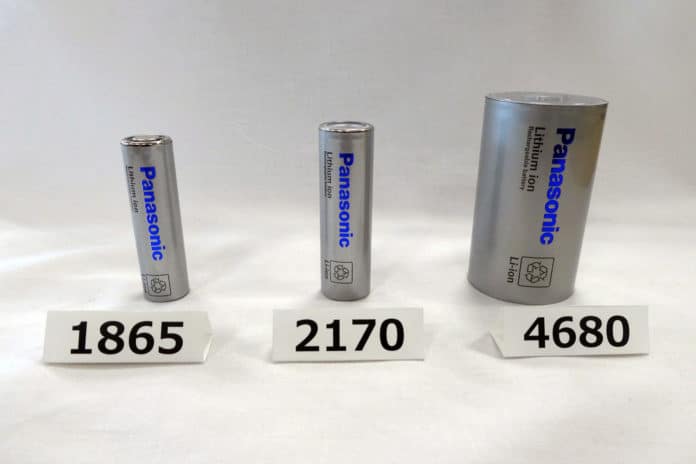Electric vehicles (EVs) have a growing presence all over the world. Helping to power the ever-increasing number of EVs on the roads is Panasonic’s cylindrical automotive battery business.
The company has revealed its new 4680 battery cell built for Tesla, and it plans to start test production early next year. It is claimed that the new battery will provide five times more energy and six times more power capacity.
New 4680 battery cells have the potential to be cheaper, more efficient, and therefore enable a longer range or smaller battery packs. The battery is powered by a new anode that uses new silicon. Panasonic says the new nickel-cobalt-aluminum (NCA) 4860 cell format, which represents the battery’s dimensions of 46 mm wide and 80 mm tall, will store more energy, reduce battery costs by up to 50%, and drive a 100-fold increase in battery production by 2030.
Tesla has its own in-house 4680 battery project, which, as we understand, will be supplemented by external suppliers, such as Panasonic. It has also begun forging supplier contracts with South Korea’s LG Energy Solutions and China’s Contemporary Amperex Technology Co. (CATL) to produce lithium-iron-phosphate (LFP) batteries for its standard-range electric vehicles. The LFP batteries are considered cheaper and safer than nickel-based batteries but have less energy density and need to be recharged more often.
Panasonic has no plans to build LFP units, a technology Tesla plans to make cheap batteries for these cars. Its auto batteries are nickel-cobalt-aluminum (NCA). Once it goes into mass production, the 4680 battery has the potential to greatly improve electric vehicle efficiency and increase its electric vehicle range by approximately 16%.
The 4680 cells have the potential to significantly lower the per-vehicle cost of batteries, but they’re also difficult to produce, according to Panasonic. The company is working to set up a prototype production line for the cells by the end of the current fiscal year in March.
